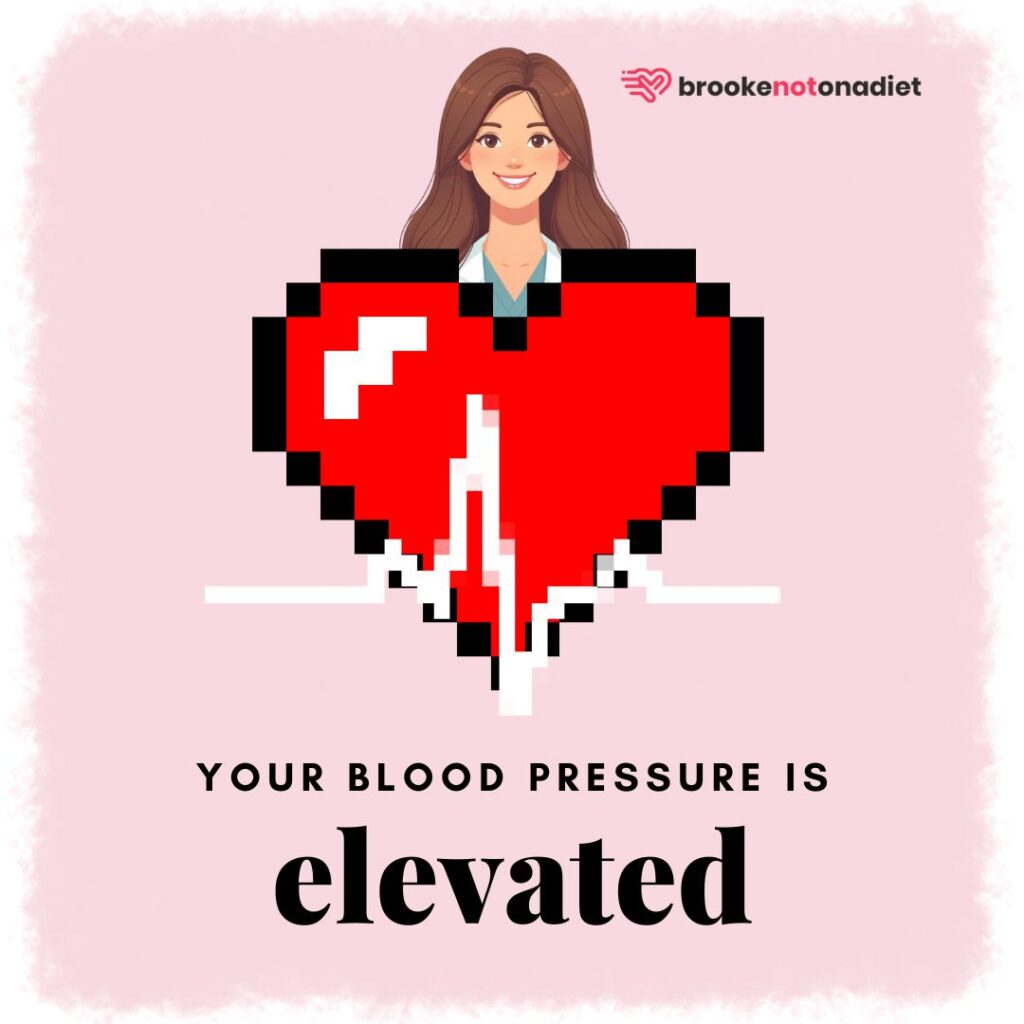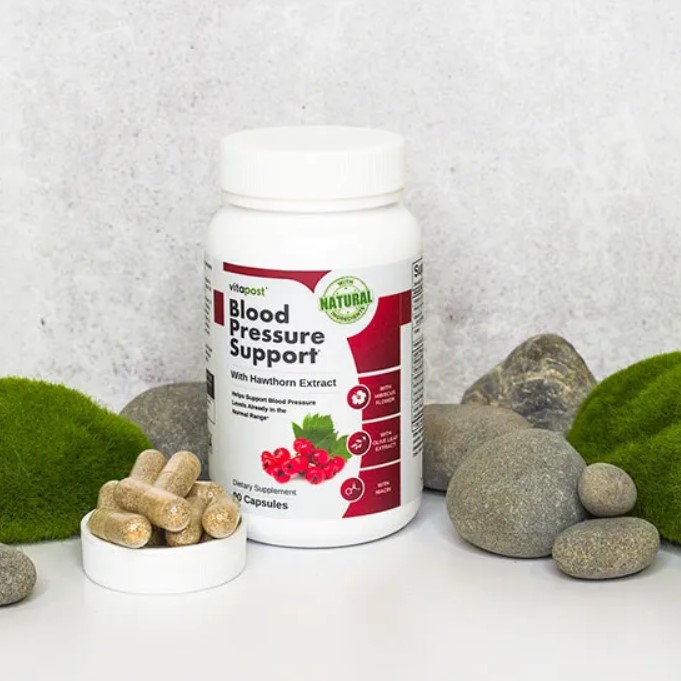
A blood pressure reading of 126/107 mm Hg is in the “elevated” range, according to the American Heart Association (AHA).
This means it’s not high enough to be considered hypertension but does signal that it’s time to take steps to lower it.
Those steps include adopting healthier lifestyle habits, regularly monitoring your blood pressure, and consulting with a healthcare professional for personalized advice.
Elevated blood pressure, as defined by the AHA, means having a systolic blood pressure between 120-129 mm Hg and a diastolic pressure below 80 mm Hg.
Readings above this range move into hypertension territory, which is further categorized into Stage 1 and Stage 2, based on how high the pressure is.
With a reading of 126/107 mm Hg, you’re right at the doorstep of hypertension, signaling a need for proactive management.
Managing elevated blood pressure involves both natural and medical strategies.
Naturally, you can make significant strides by:
- Engaging in regular physical activity.
- Eating a balanced diet rich in fruits and vegetables and low in sodium.
- Managing stress.
- Avoiding tobacco and excessive alcohol.
Medically, if lifestyle changes aren’t enough or if your blood pressure is significantly high, medications such as diuretics, ACE inhibitors, or beta-blockers may be recommended.
It’s crucial to follow your healthcare provider’s recommendations closely.
Ignoring elevated blood pressure and allowing it to escalate into hypertension comes with serious risks, including the increased likelihood of heart attacks, strokes, heart failure, kidney disease, and loss of vision.
Hypertension is known as the “silent killer” because it can cause significant damage without noticeable symptoms, emphasizing the importance of early and effective management.
Keeping an eye on your blood pressure and taking steps to manage it is key to maintaining good health and preventing these severe complications.
What is the Mean Arterial Pressure (MAP) for a blood pressure of 126/107 mm Hg?
The Mean Arterial Pressure (MAP) for a blood pressure of 126/107 mm Hg is:
What is the Pulse Pressure (PP) for a blood pressure of 126/107 mm Hg?
The Pulse Pressure (PP) for a blood pressure of 126/107 mm Hg is:
How to manage blood pressure of 126/107 mm Hg?
Maintaining healthy blood pressure is crucial for overall cardiovascular health and can prevent the development of hypertension and its associated risks.
Here’s a step-by-step guide to keeping your blood pressure within a healthy range.
1. Monitor your blood pressure regularly
Keeping a close eye on your blood pressure at home is essential.
A reliable home blood pressure monitor will allow you to track your readings under various conditions and at different times.
Accurate monitoring helps in identifying patterns or triggers that cause increases.
It’s recommended to take readings at the same times each day, such as morning and evening, to ensure consistency.
Logging these readings, along with notes on diet, activity, and stress levels, can offer invaluable insights for personal adjustments and for discussions with your healthcare provider.
2. Adopt a heart-healthy diet
The food you eat plays a significant role in managing blood pressure.
The DASH diet, which stands for Dietary Approaches to Stop Hypertension, is highly effective.
It focuses on eating fruits, vegetables, whole grains, poultry, fish, and nuts, while limiting salt, red meat, sweets, and sugary beverages.
Integrating these dietary habits can help reduce blood pressure significantly.
Moreover, understanding portion sizes and reading nutritional labels to manage sodium intake are crucial steps in this process.
3. Engage in regular physical activity
Regular exercise strengthens your heart, allowing it to pump blood with less effort and reducing the pressure on your arteries.
Aim for at least 150 minutes of moderate-intensity aerobic activity or 75 minutes of vigorous activity each week, supplemented by muscle-strengthening exercises on two or more days.
Activities can include walking, jogging, cycling, swimming, or any other cardiovascular exercise, along with resistance training like weights or yoga.
4. Achieve and maintain a healthy weight
Weight loss is one of the most effective lifestyle changes for controlling blood pressure.
Losing even a small amount of weight if you’re overweight or obese can help reduce your blood pressure.
Additionally, watching waistline measurements is important because too much weight around your waist can increase your risk of high blood pressure.
Set realistic goals and work steadily towards achieving and maintaining a healthy weight through diet and exercise.
5. Manage stress
Long-term stress may contribute to high blood pressure. Identifying and understanding stress triggers in your life is essential.
Once identified, you can work on strategies to reduce or manage stress, such as taking time to relax, practicing breathing exercises, meditation, or pursuing hobbies that you enjoy.
Establishing a routine that includes activities for stress reduction can have a positive impact on your blood pressure.
6. Quit smoking and limit alcohol
Each cigarette you smoke increases your blood pressure for many minutes after you finish.
Quitting smoking helps your blood pressure return to normal. Reducing alcohol intake can also lower your blood pressure.
If you choose to drink, do so in moderation.
For healthy adults, that means up to one drink a day for women and two drinks a day for men.
7. Consider medication
If lifestyle changes alone aren’t sufficient to bring your blood pressure down to safe levels, your doctor may prescribe medication.
There are several types of medication that can help manage high blood pressure, including ACE inhibitors, ARBs, diuretics, and beta-blockers.
It’s critical to follow your doctor’s instructions precisely and never change your medication dosage without consulting your healthcare provider first.
8. Regular check-ups
Regular visits to your doctor are key to blood pressure management.
These check-ups can help you keep track of your progress, adjust your management plan as needed, and address any other health concerns that might arise.
Be open and honest with your healthcare provider about your lifestyle and any challenges you face in managing your blood pressure.
9. Stay informed and adjust as needed
Stay informed about the latest research and recommendations on blood pressure management.
Healthcare guidelines evolve, and new research can offer insights into more effective strategies for controlling blood pressure.
Be flexible and willing to adjust your lifestyle and treatment plan under the guidance of your healthcare provider to continue effectively managing your blood pressure.
Discover the Power of Natural Blood Pressure Support

Introducing our premium Blood Pressure Support supplement, expertly crafted to promote healthy blood pressure levels and cardiovascular wellbeing.
✅ Formulated with natural ingredients for gentle yet effective support
✅ Helps maintain optimal blood pressure levels
✅ Supports heart health and overall cardiovascular function
✅ May aid in reducing the risk of heart-related issues
✅ Manufactured in a GMP-certified facility for quality assurance
Take proactive steps towards a healthier heart with our Blood Pressure Support supplement.
What is a blood pressure chart and how to read it?
A blood pressure chart is a vital tool developed by the American Heart Association, providing a visual representation of various blood pressure ranges from normal to very high.
This chart is grounded in extensive research, including a 2018 study by Muntner et al., indicating that blood pressure benchmarks should reflect ambulatory and at-home variations.
The chart categorizes blood pressure into five stages: Normal, Elevated Blood Pressure (Pre-hypertension), High Blood Pressure (Hypertension Stage 1 and Stage 2), and Hypertensive Crisis, with specific systolic and diastolic mm Hg values assigned to each category.
To read the chart, you look at two numbers in a blood pressure reading: the systolic (upper number) and the diastolic (lower number) pressures, expressed in millimeters of mercury (mm Hg).
For example, a reading of 120/80 mm Hg means a systolic pressure of less than 120 mm Hg and a diastolic pressure of less than 80 mm Hg, which falls into the “Normal BP” category.
The systolic number measures the pressure in your arteries when your heart beats (contracts), indicating how hard your heart is working to pump blood.
The diastolic number measures the pressure in your arteries when your heart rests between beats, reflecting the resistance to blood flow in the blood vessels.
Both numbers are crucial for diagnosing hypertension and determining the risk of cardiovascular complications.
As per Dr. Paul K. Whelton’s insights and the studies mentioned, the chart serves not only as a diagnostic tool but also emphasizes the importance of awareness and management of heart health, urging a focus on non-pharmacological measures for those in the elevated and high blood pressure stages.
Why maintaining a healthy blood pressure is so important?
Maintaining a healthy blood pressure is crucial because high blood pressure, or hypertension, can lead to various serious health issues affecting different organs in your body. Here’s why it’s important to keep it in check.
- Heart attack (myocardial infarction): Persistent high blood pressure can lead to the narrowing and stiffening of arteries, a condition known as atherosclerosis, which increases the risk of a heart attack.
- Stroke (cerebrovascular accident): Elevated blood pressure can harm the blood vessels in the brain, increasing the likelihood of a stroke.
- Aneurysm: High blood pressure weakens the walls of blood vessels, raising the risk of aneurysm formation. A ruptured aneurysm can cause severe internal bleeding.
- Heart failure: Hypertension causes the heart to work harder to pump blood against increased resistance in arteries. Over time, this extra workload can lead to thickening of the heart muscle and reduced efficiency.
- Kidney problems: Chronic hypertension can damage blood vessels in the kidneys, impairing their ability to filter waste and excess fluid from the body.
- Eye problems (retinopathy): Hypertension can damage small blood vessels in the eyes, potentially leading to vision problems or even blindness.
- Metabolic syndrome: Hypertension often coexists with obesity, high blood sugar, and abnormal cholesterol levels, increasing the risk of metabolic syndrome.
- Changes with memory or understanding: Chronic hypertension may adversely affect the brain, increasing the risk of cognitive impairment, vascular dementia, or Alzheimer’s disease.
Best Blood Pressure Monitor

Monitor your blood pressure with ease and accuracy with our advanced Oxiline Pressure Monitor X Pro.
✅ High-precision readings for reliable monitoring
✅ User-friendly design for hassle-free use
✅ Large LCD display for clear readings
✅ Memory function to track your blood pressure history
✅ Portable and convenient for use at home or on-the-go
Stay on top of your health effortlessly with the Oxiline Pressure Monitor X Pro. Order yours now and take control of your wellbeing today!
